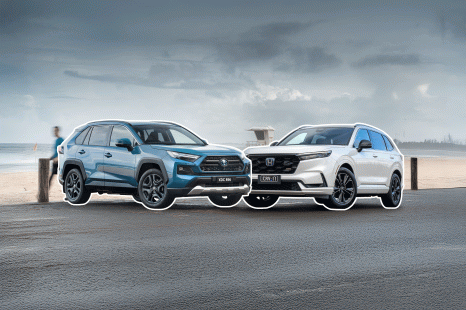

Andrew Maclean
Honda CR-V RS e:HEV vs Toyota RAV4 Edge Hybrid: Spec battle
5 Days Ago
Heart over head, the Range Rover Velar Autobiography is a lovely SUV. As a rational purchase, it makes less sense.
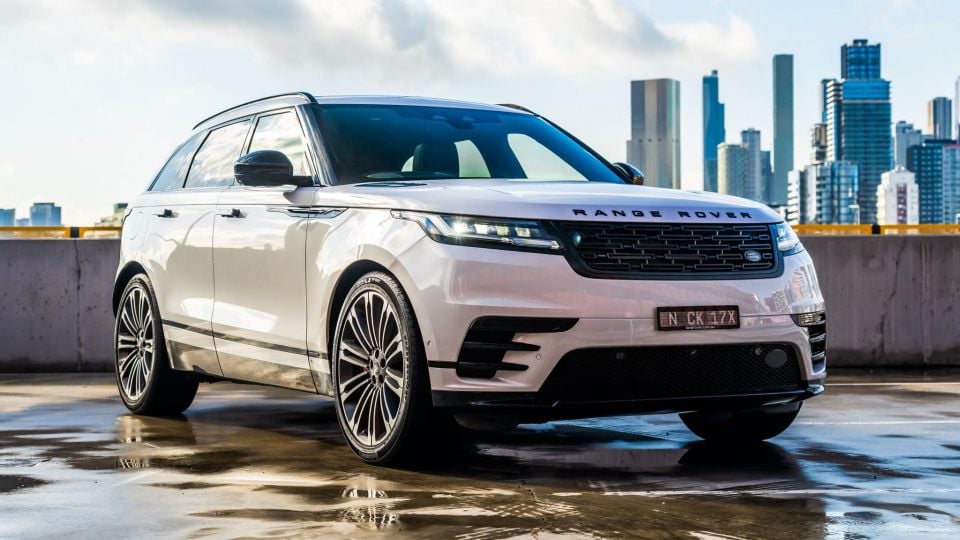
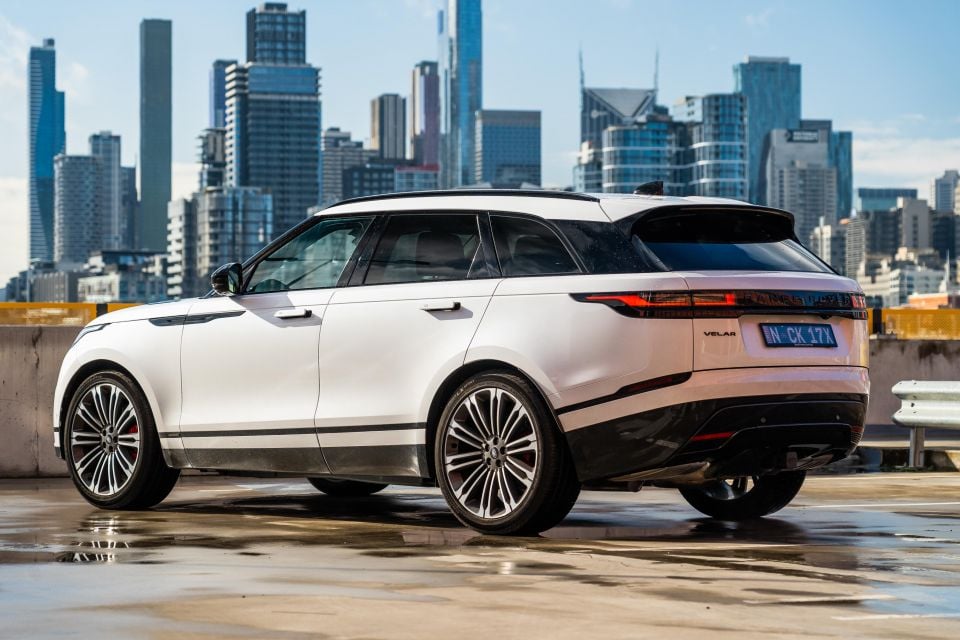

Quickly see how this car stacks up against its competition. Select any benchmark to see more details.
Where expert car reviews meet expert car buying – CarExpert gives you trusted advice, personalised service and real savings on your next new car.
Does every new car need to have a purpose? Ask the Range Rover Velar, and the answer is no.

On paper, the British luxury SUV sits in a strange corner of the car world.
Smaller than a Range Rover Sport but almost as expensive; bigger than an Evoque but not quite a mid-sized SUV… it’s for people who want a car that looks good, and makes them feel good.
With loads of leather and suede inside, a beautifully finished exterior, and a powerful petrol engine under the bonnet, the Autobiography on test here ticks all those boxes.
Then again, it’d want to. With a sticker price north of $165,000 before on-road costs, this is a very expensive luxury item.
The Velar range undercuts the Range Rover Sport by around $20,000 at the bottom end of the range.
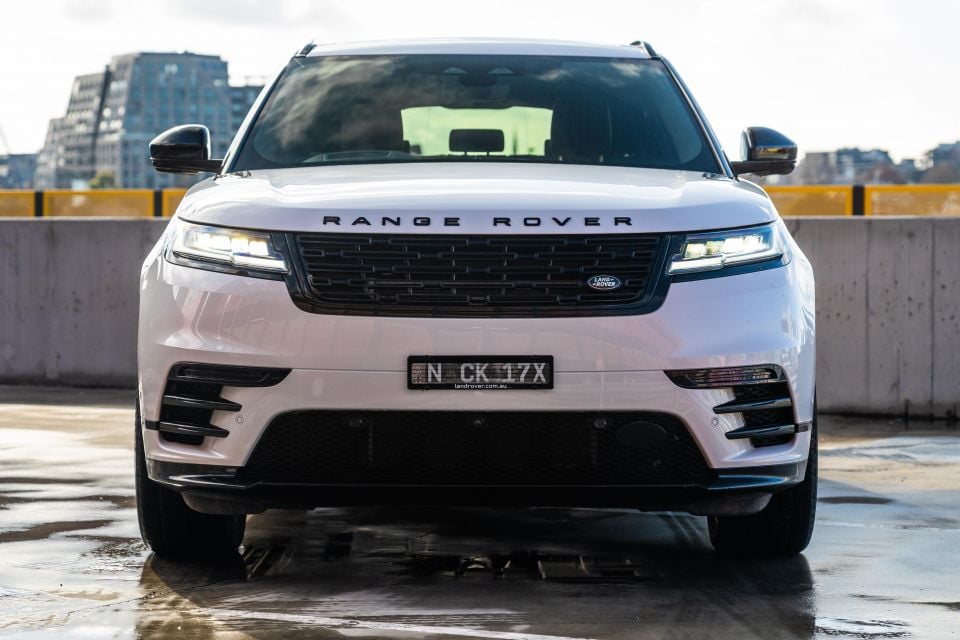
| Model | Price before on-roads |
|---|---|
| Range Rover Velar D300 Dynamic SE | $121,937 |
| Range Rover Velar P400 Dynamic SE | $130,113 |
| Range Rover Velar P400e Dynamic SE | $131,536 |
| Range Rover Velar P400 Dynamic HSE | $139,418 |
| Range Rover Velar P400e Dynamic HSE | $142,891 |
| Range Rover Velar P400 Autobiography | $155,318 |
Our tester was optioned to $165,810 before on-road costs, thanks to the addition of the Cold Climate Pack ($1820), the Black Exterior Pack ($1680), a tow hitch receiver ($1000), Configurable Dynamics ($940), black roof rails ($940), privacy glass ($890), Deep Garnet/Ebony perforated Windsor leather seats with Deep Garnet/Ebony interior ($700), illuminated metal front tread plates with R-Dynamic ($640), space saver spare wheel ($530), and remote rear seat releases ($300).
To see how the Range Rover Velar shapes up against the competition, check out our comparison tool
Range Rover has a clear focus on minimalism. The Velar has featured a pared-back interior since launch, but a recent update has taken things further.
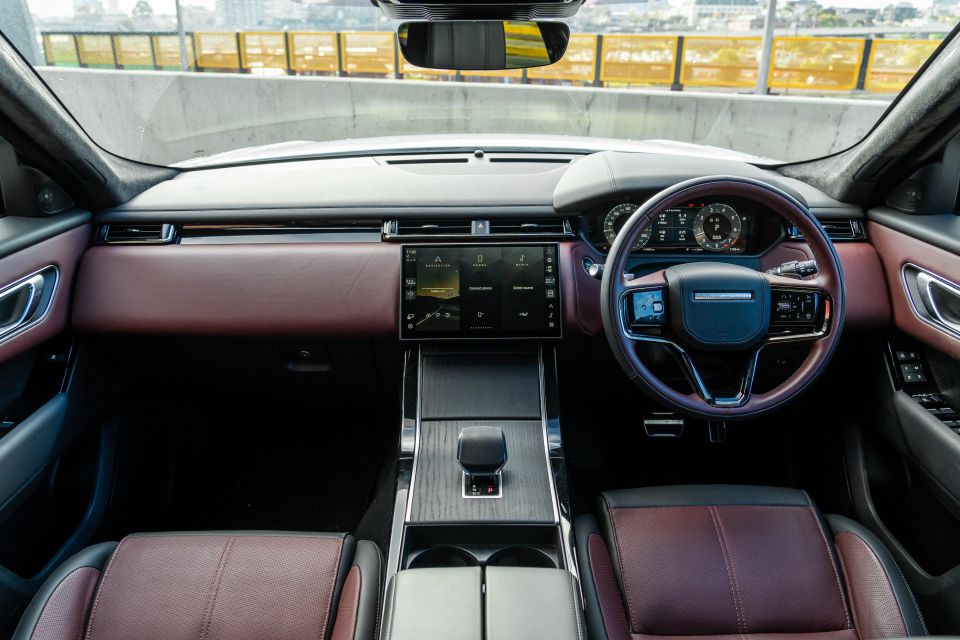
The transmission tunnel is home to two cupholders, a stubby gear selector, and a piece of lovely open-pore wood; the climate controls and off-road modes have migrated to the touchscreen sitting proud of the leather-trimmed dash.
It’s a beautiful cabin, especially in two-tone burgundy and black like our tester. Short of a Rolls-Royce, nothing makes you exhale and sink into your seat like a Range Rover.
The fundamentals are good here. The driving position is excellent, with enough adjustment for taller drivers to get comfortable, and a commanding view of the road ahead.
Everything you touch feels expensive, from the cold metal paddles on the back of the steering wheel to the supple leather on the dashboard, and the suede-effect headliner under the roof.
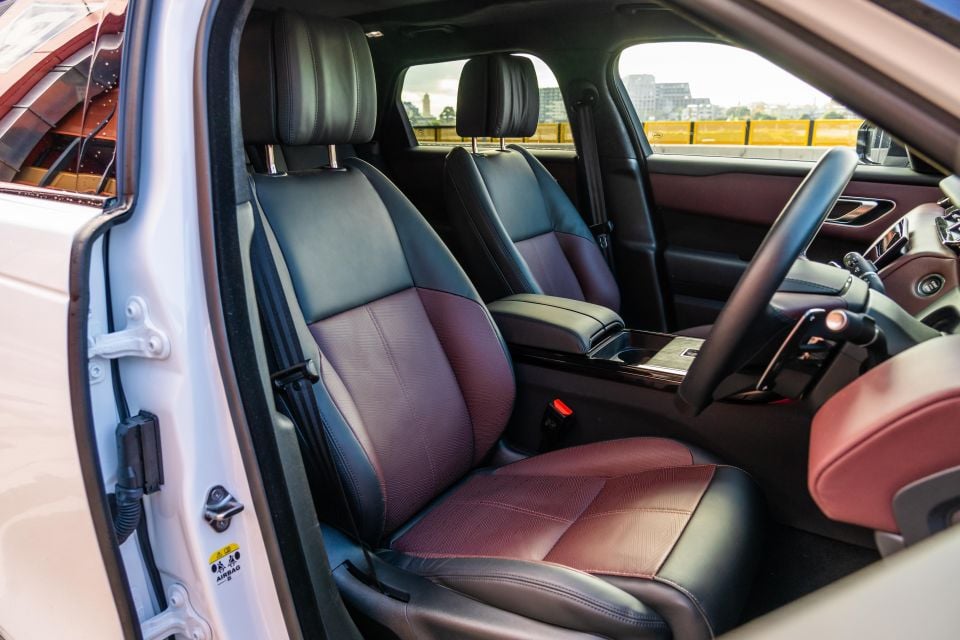
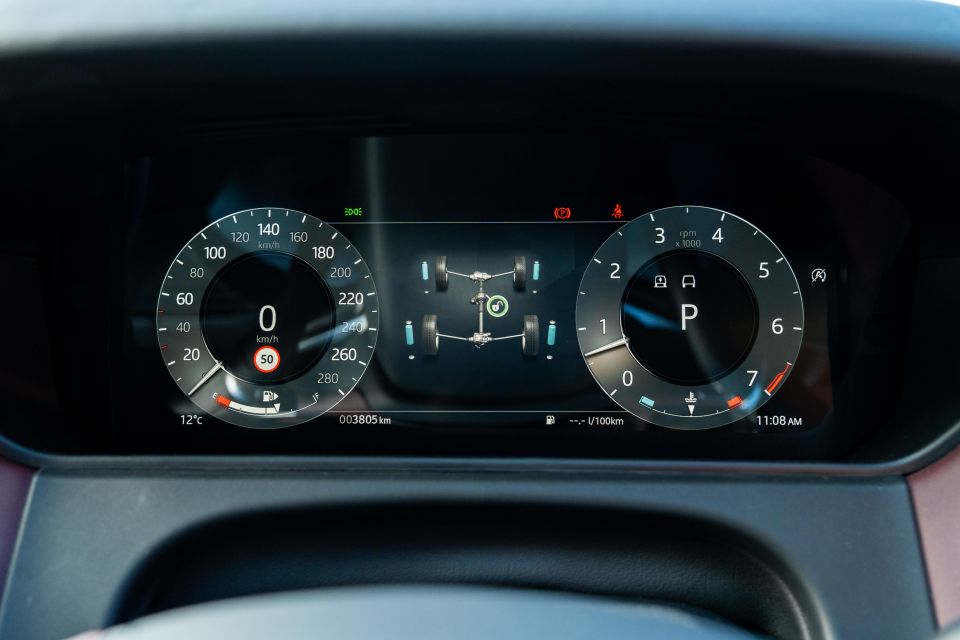
Cheaper versions of the Velar have an unsatisfying vegan seat trim alternative that’s not really up to scratch in a Range Rover, but there’s none of that nonsense in the Autobiography.
The central touchscreen is running a version of the Pivi Pro software that features in everything from the Land Rover Defender to the full-size Range Rover, adapted for life after physical climate controls.
It’s pretty to look at and responds in a way that will feel quick to iPad devotees, with a menu structure that doesn’t require too much diving to reach key functions.
The colours and icons are all similar; it can be hard to make out some of the more obscure functions in the main menu, but the shortcuts to access your heated seats, temperature controls, fan speed, and drive modes are actually quite easy to find on the move.
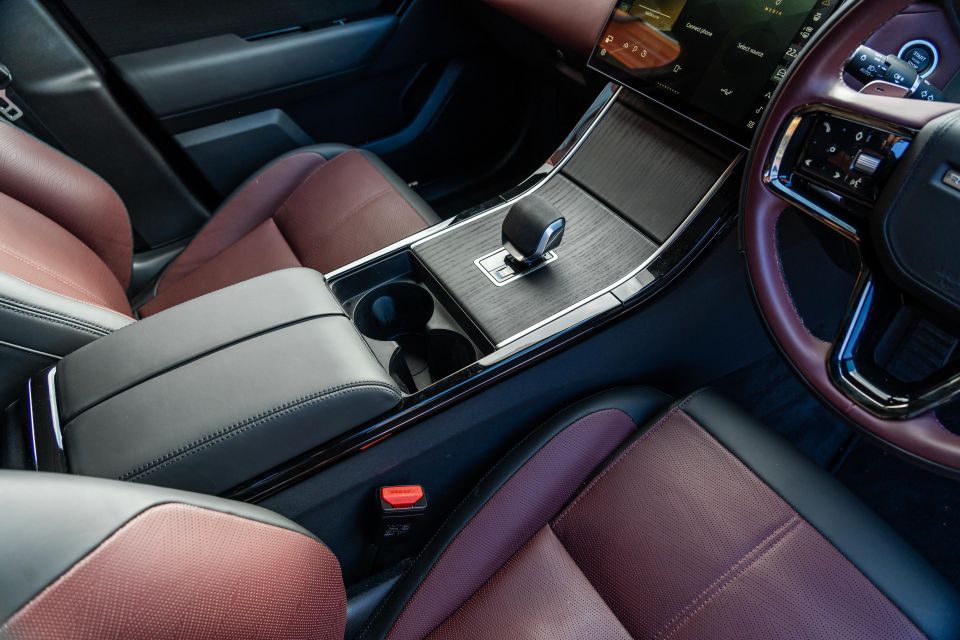
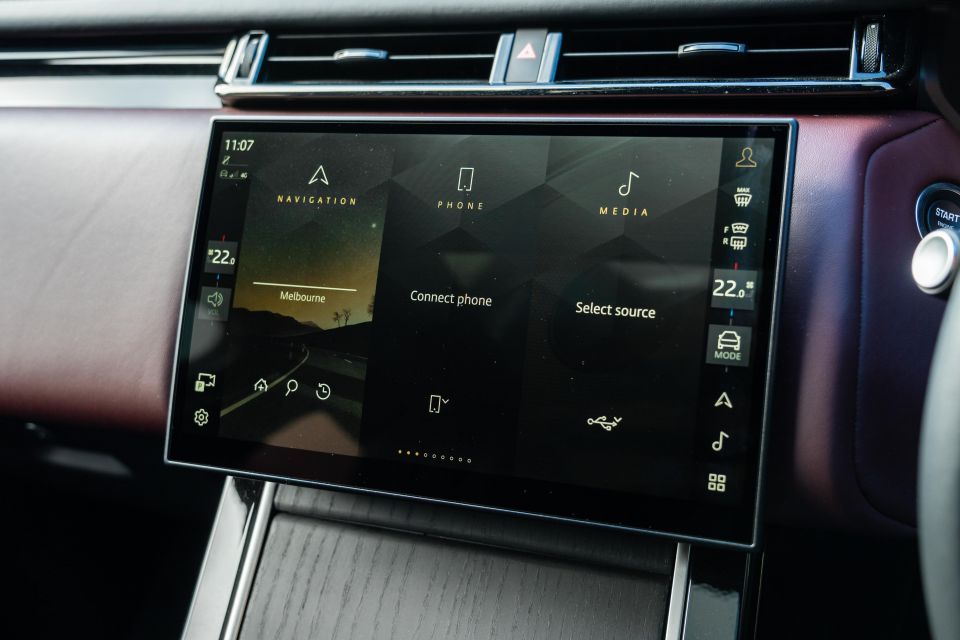
No, they’re not as good as physical controls, but they’re about as good as touch controls get.
The digital dials are clear and easy to read, with sharp-looking maps, but they aren’t quite as easy to navigate as Audi or Mercedes-Benz options. Realistically it’s a non-issue, given most owners will set and forget.
Storage up front is limited by the very pretty, but mostly covered central tunnel. The phone slot under the dash is quite awkwardly shaped if you want to charge your device using a cable, and the cupholders are in a spot that means tall drink bottles get in your way if you’re using the armrest.
It’s down to the fact this is an older car that’s been adapted to accommodate new technology and a new layout; that doesn’t make it less annoying.
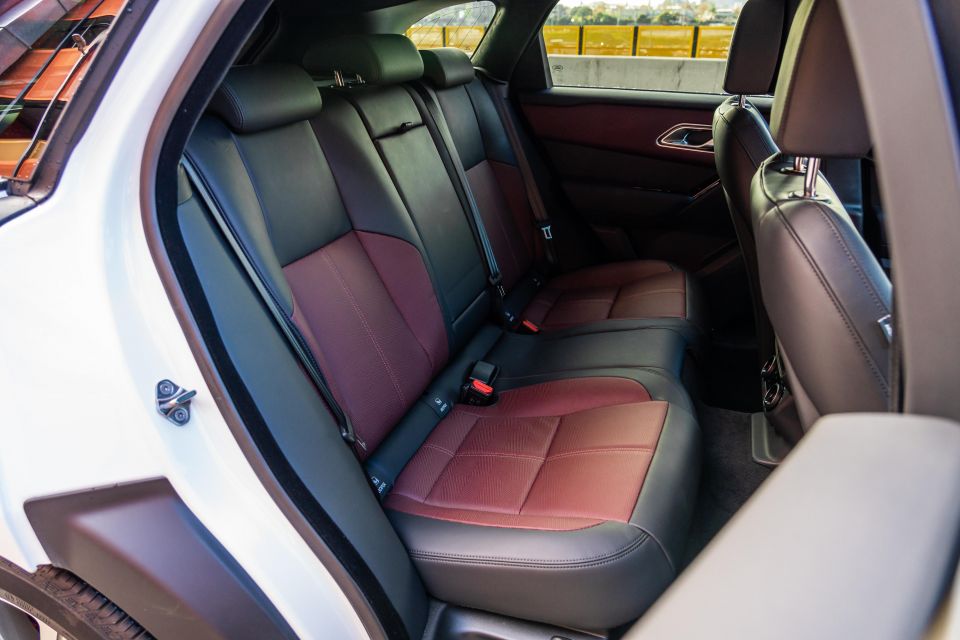
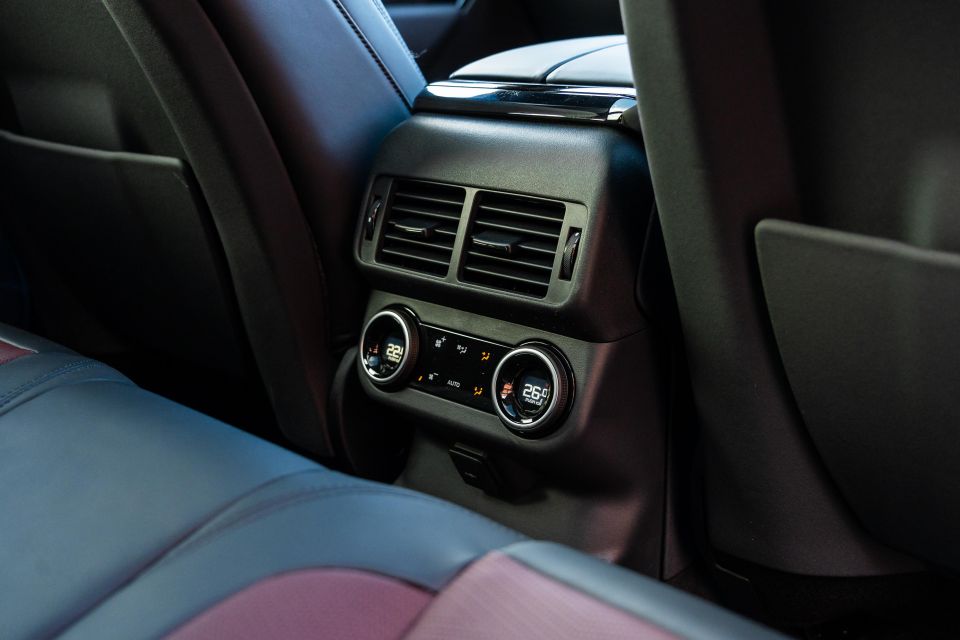
The pinched glasshouse might look incredible on the outside, but it doesn’t make for particularly welcoming second row space. Headroom is quite limited, legroom behind taller drivers is cramped, and outward visibility is poor if you’re prone to carsickness.
The slim rear door opening also makes it harder to load kids into car seats, or for adults to squeeze themselves back there. At least the backrests recline with a powered switch (which looks suspiciously like the lock button from the first Ford Escape mum drove), and there’s a trio of top-tether child seat anchor points.
Pop the powered tailgate and you’re presented with a long and flat cargo space. The air suspension kneels down when you get out, making it easier to slide heavy items.
Beware though, the claimed boot space is measured to the roof rather than the seat backs.
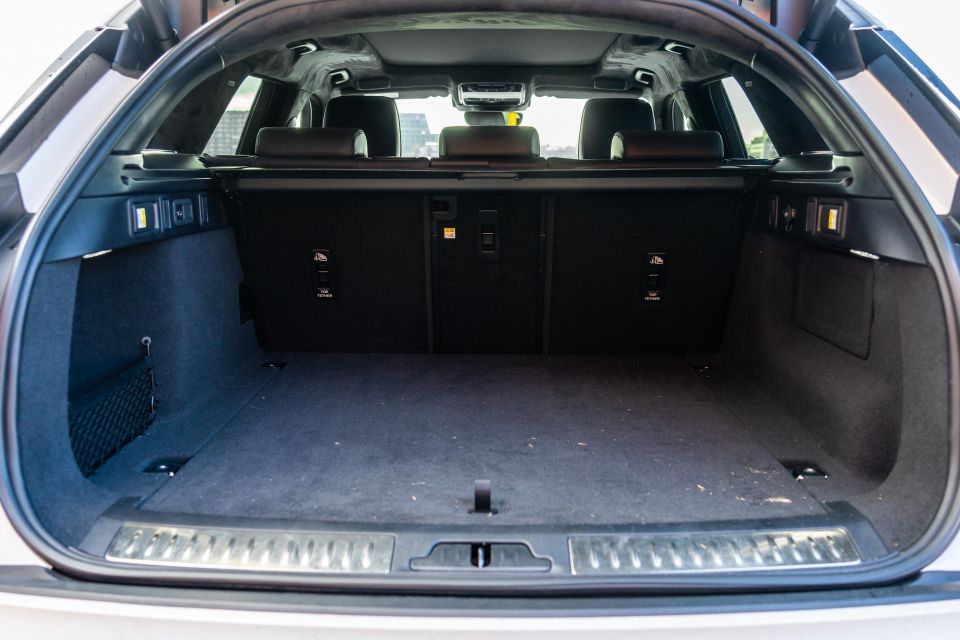
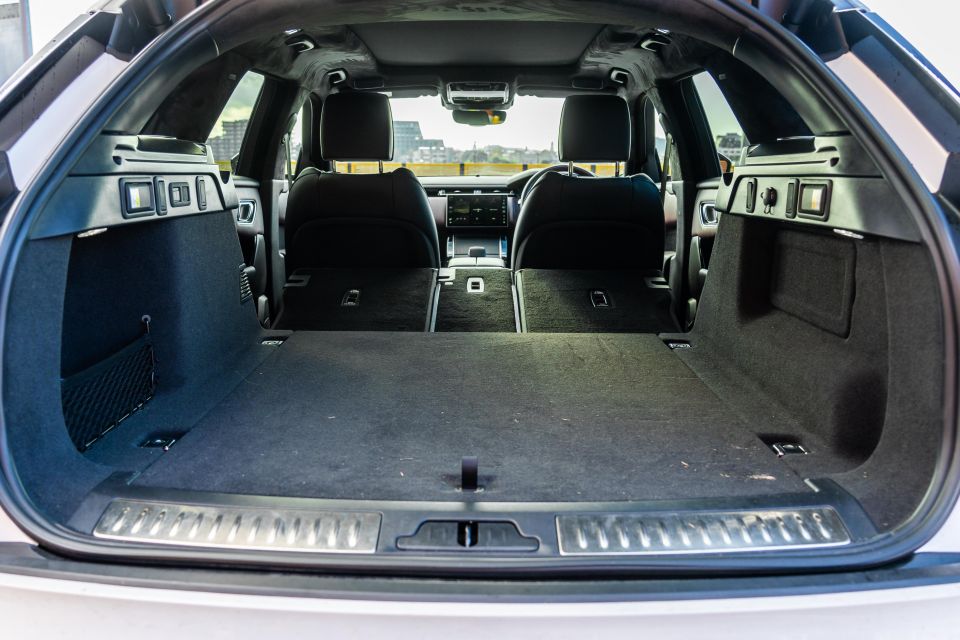
Although this is a very usable space, the 735L claimed here isn’t a match for bigger cars with smaller boot space claims measured using different standards.
| Dimensions | Range Rover Velar P400 Autobiography |
|---|---|
| Length | 4797mm |
| Width | 2041mm |
| Height | 1678mm |
| Wheelbase | 2874mm |
| Cargo capacity | 735 litres (5-seat) 1798 litres (2-seat) |
To see how the Range Rover Velar shapes up against the competition, check out our comparison tool.
Earlier examples of the Range Rover Velar had supercharged petrol power, but the current P400 has a turbocharged inline-six engine boosted by a 48V mild-hybrid system, or what JLR calls an “e-supercharger”.
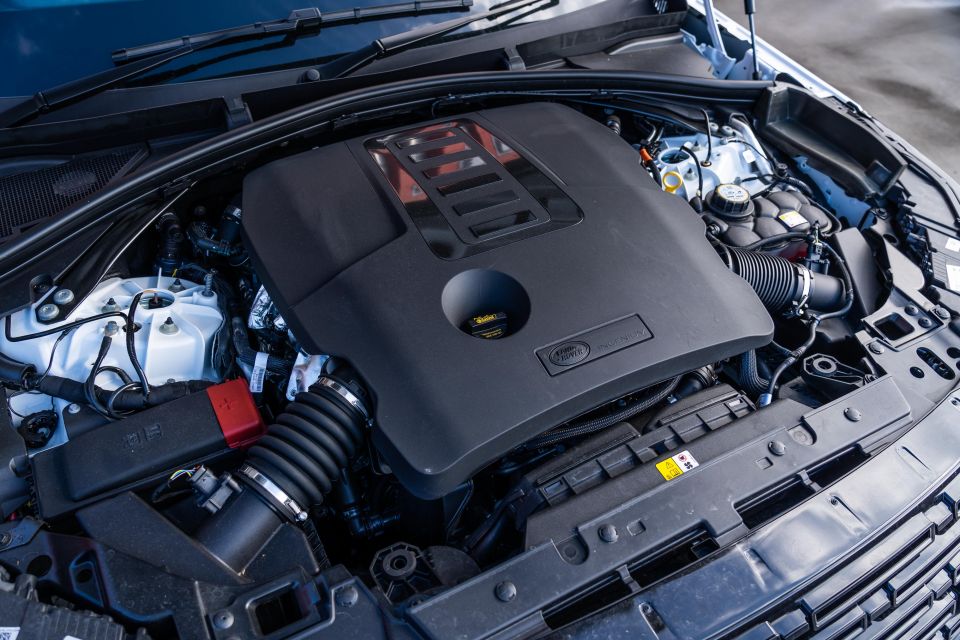
In essence, the car’s clever electrical system can artificially spool up the turbo at low speed to cut down on lag, and deliver a more linear torque curve.
| Specifications | Range Rover Velar P400 Autobiography |
|---|---|
| Engine | 3.0L inline-six MHEV |
| Engine outputs | 294kW / 550Nm |
| Transmission | 8-speed auto |
| Driven wheels | AWD |
| Weight | 2085kg |
| Fuel economy (claimed) | 9.1L/100km |
| Fuel economy (as tested) | 9.7L/100km |
| Fuel tank capacity | 83L |
| Fuel requirement | 95 RON |
| CO2 emissions | 206g/km |
| Emissions standard | Euro 6 |
| Braked tow capacity | 2500kg |
To see how the Range Rover Velar shapes up against the competition, check out our comparison tool
There’s a reassuring amount of weight to all the controls, and enough insulation to make you forget the outside world exists. The Velar is just a lovely place to spend long periods of time in.
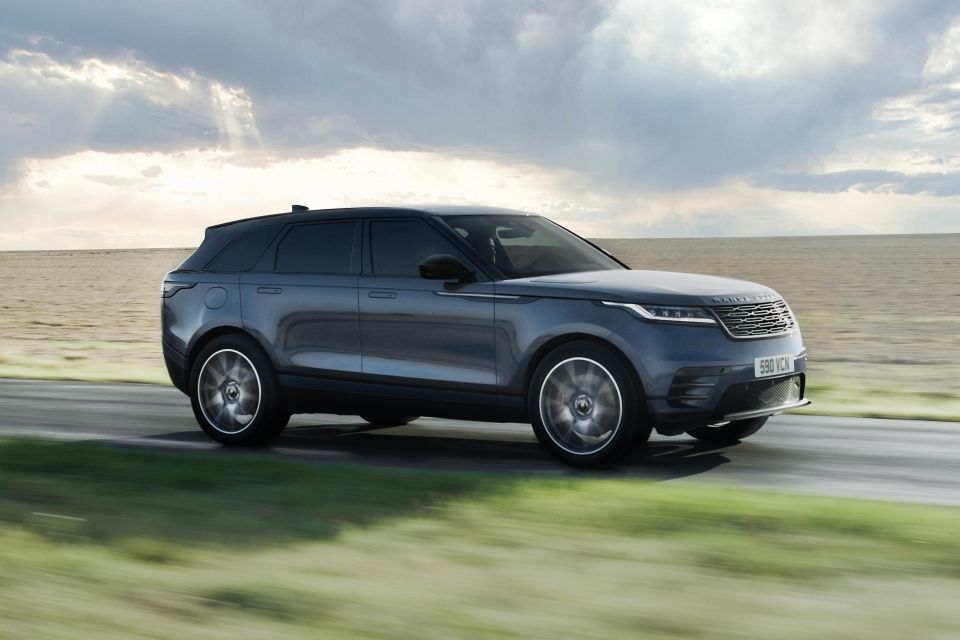
Prod the start button and the inline six fires with a growl, before settling into a smooth and quiet idle. Although an overall sense of quiet is a key pillar for Range Rover, the satisfying engine note is always welcome.
In town, the combination of a torquey engine and exemplary refinement make the Velar feel right at home.
There’s a hint of awkwardness from the eight-speed automatic and idle start/stop system off the line, but once you’re rolling there’s plenty of punch.
It slurs smoothly from gear-to-gear on light throttle inputs, rarely drifting above 2500rpm, and there’s a satisfying shove in the back if you lean harder on the accelerator away from the lights.
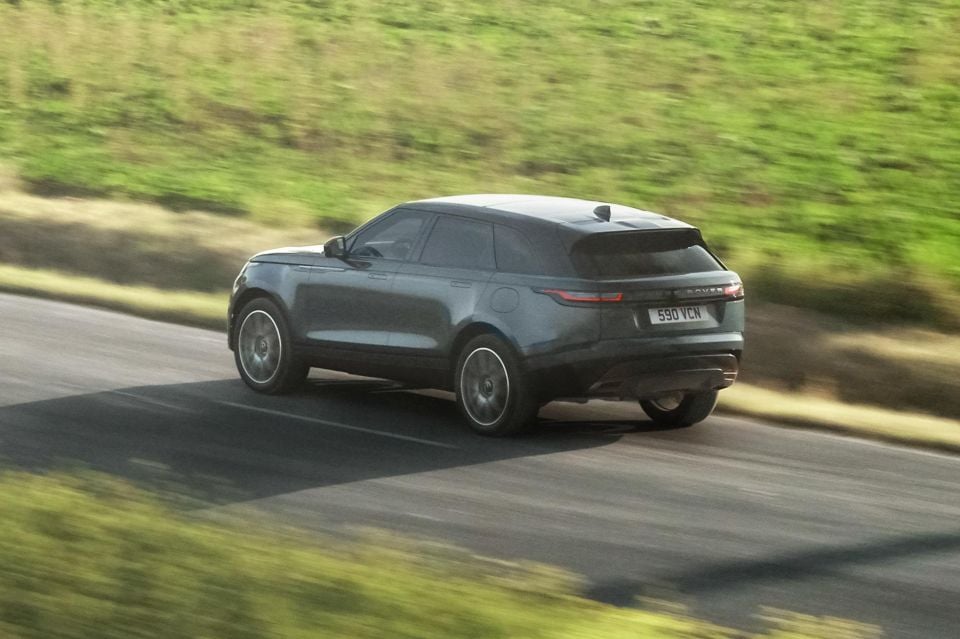
Although you don’t get the same ultra-light steering here that’s becoming common on some rivals, the Velar is still an easy car to place in town. Unlike in a full-sized Range Rover you don’t feel the need to breathe in while driving down narrow cobblestone lanes, and the excellent surround-view camera leaves no excuse for scraping those very pretty wheels.
Ride quality on the air suspension is mostly excellent. It does a great job over bigger obstacles like speed bumps, and the fiddly little broken surfaces that can undermine the refinement in air-sprung cars don’t undermine the comfort in the cabin.
There’s no escaping the size of the wheels on this Autobiography when you smack into some of Melbourne’s sharper potholes though.
While we’re whinging about the Velar in the city, it’s a thirsty beast around town. Gone is the old supercharger, but the turbocharged P400 setup in the Autobiography isn’t what you’d call miserly in traffic.
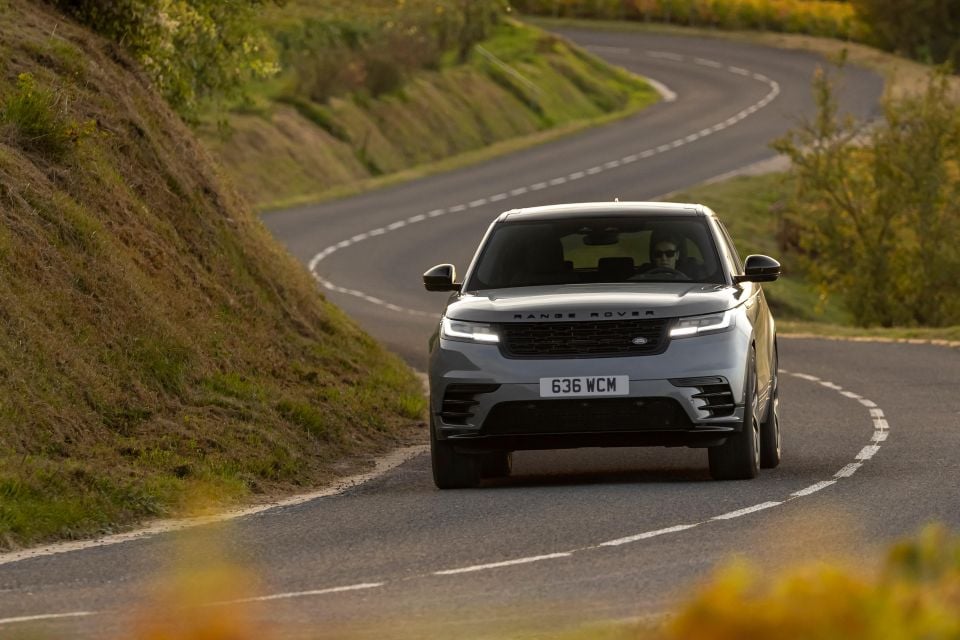
It’s most at home on the open road, where it just hums along effortlessly. Put your foot down and the inline-six reels in the horizon in a hurry, backed by an angry bark, but at a cruise it drops into eighth and disappears into the background.
The sound deadening is exceptional; there’s hardly any wind or road noise in the cabin, allowing you to enjoy the excellent stereo or chat with your passengers without raising your voice.
Driver assists in JLR vehicles aren’t overbearing like they are in some rivals. The lane-keeping assist doesn’t try to wrestle the wheel from your hands, and this Velar didn’t incessantly beep or bong at us for doing 2km/h over the speed limit.
The adaptive cruise control confidently maintains a gap to the car in front, but it’s not the smoothest setup in the world; occasionally it grabs at the brakes in way that feels more airport taxi, and less royal chauffeur.
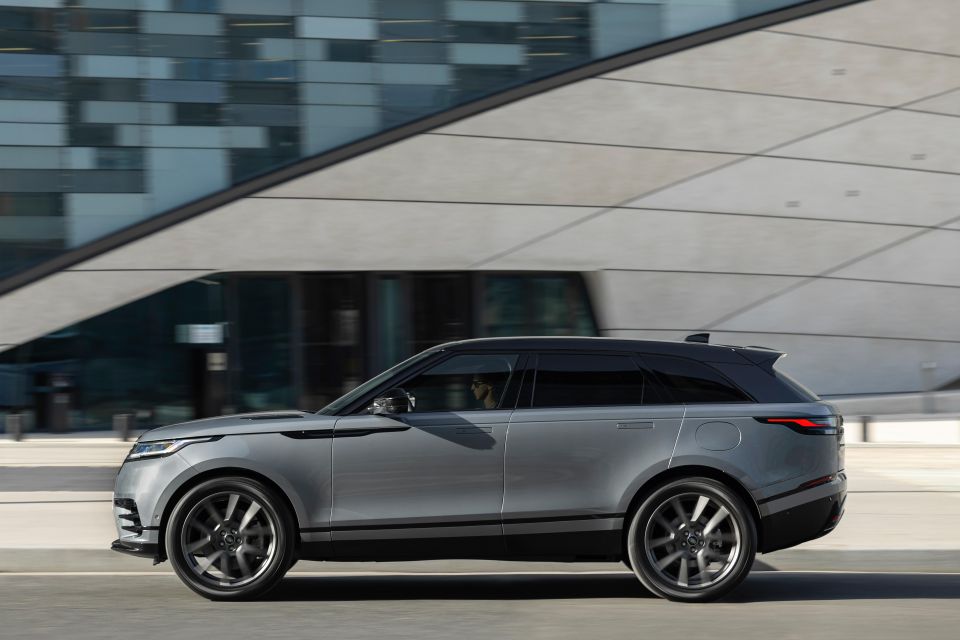
Ride comfort is excellent at highway speeds. In the default Comfort drive mode it feels rock-solid, with the sort of long-legged feel you get in bigger and more expensive members of the Range Rover family.
It’s just a shame the petrol engine in this tester likes a drink; with a more efficient diesel under the bonnet the Velar has all the makings of a stunning long-haul cruiser.
To see how the Range Rover Velar shapes up against the competition, check out our comparison tool
The Range Rover Velar Autobiography is the flagship variant in the lineup.
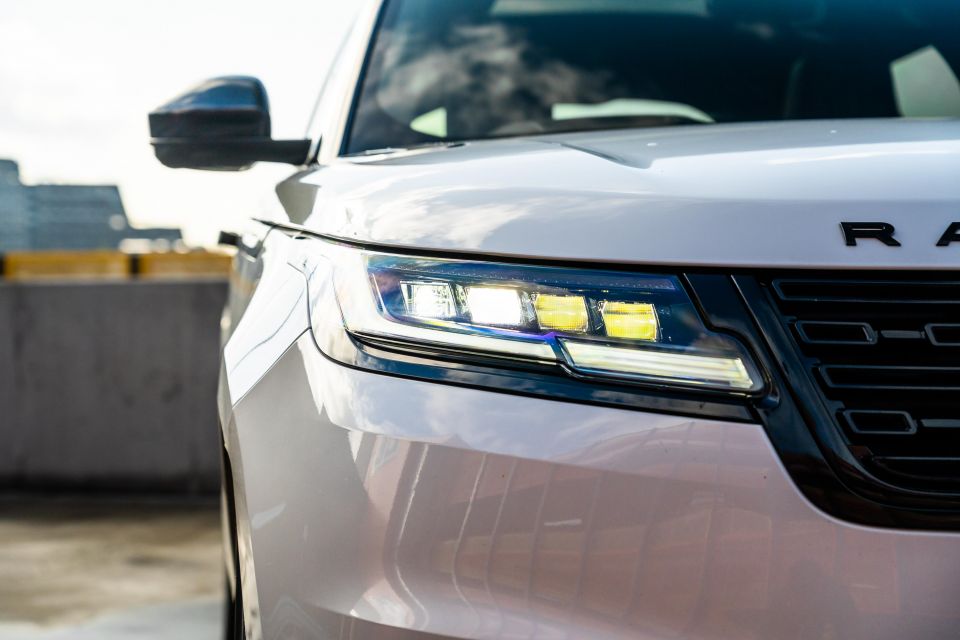

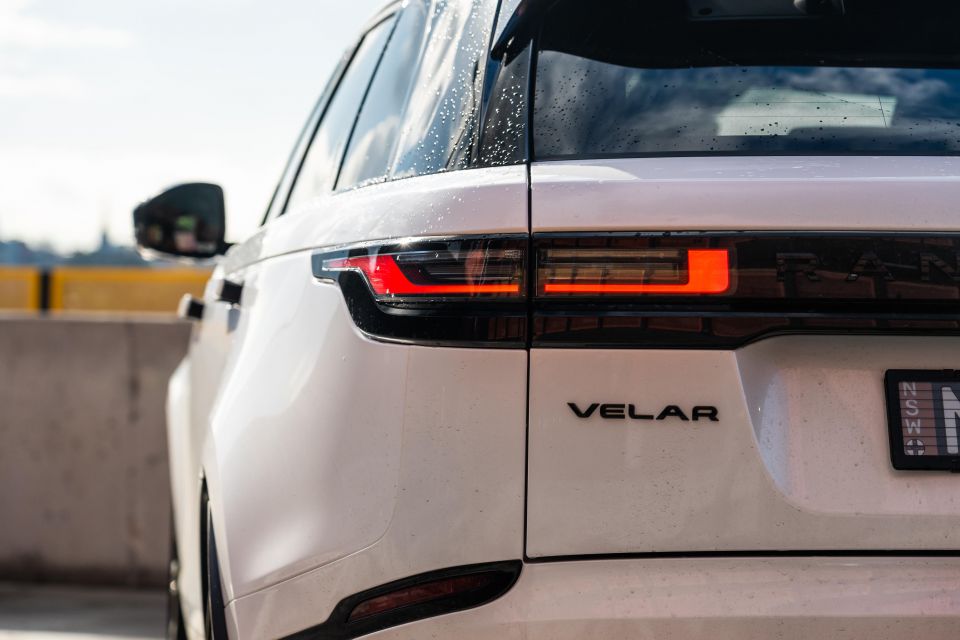
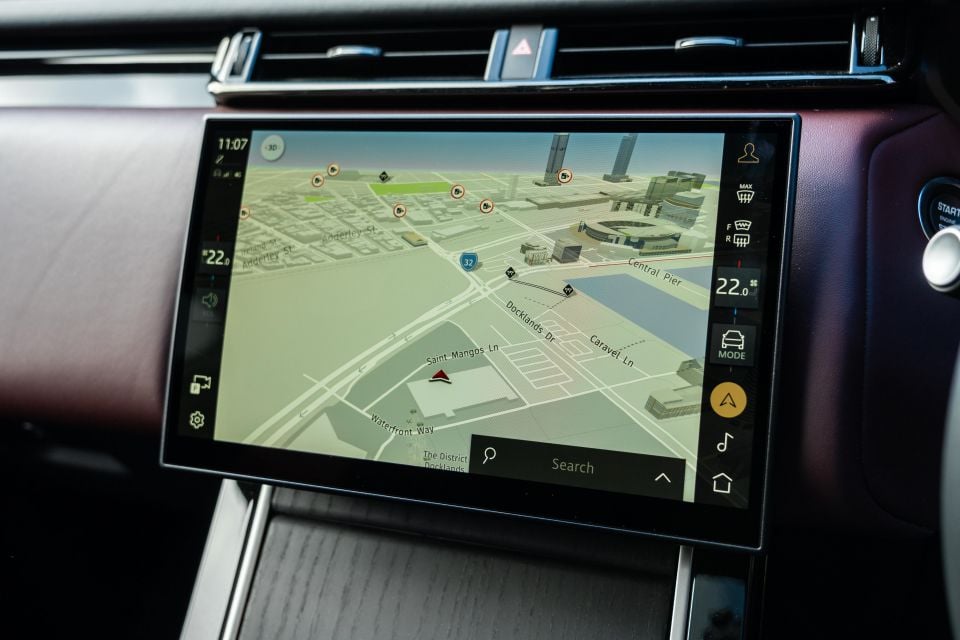
Where expert car reviews meet expert car buying – CarExpert gives you trusted advice, personalised service and real savings on your next new car.
Range Rover Velar Autobiography highlights:
To see how the Range Rover Velar shapes up against the competition, check out our comparison tool
The Range Rover Velar had a five-star ANCAP safety rating based on testing carried out in 2017, however, it’s not applicable to vehicles built from January 1 this year. Therefore the vehicle is unrated.
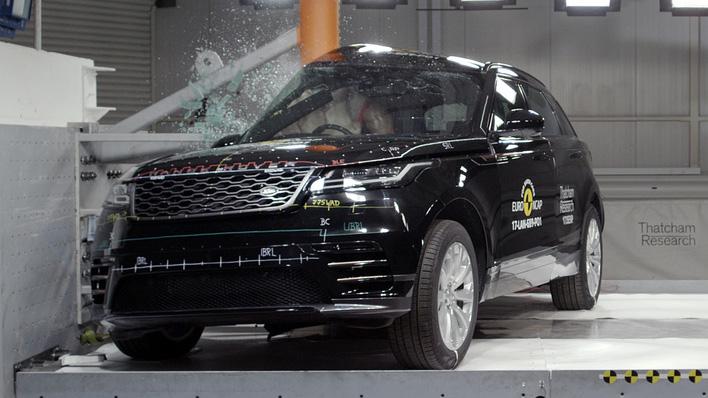
| Category (expired) | Range Rover Velar (expired) |
|---|---|
| Adult occupant protection | 93 per cent |
| Child occupant protection | 85 per cent |
| Vulnerable road user protection | 74 per cent |
| Safety assist | 72 per cent |
Standard safety equipment includes:
To see how the Range Rover Velar shapes up against the competition, check out our comparison tool
The Range Rover Velar is backed by the same warranty as the broader JLR family, and has longer-than-average service intervals of 20,400km or every year (whichever comes first).
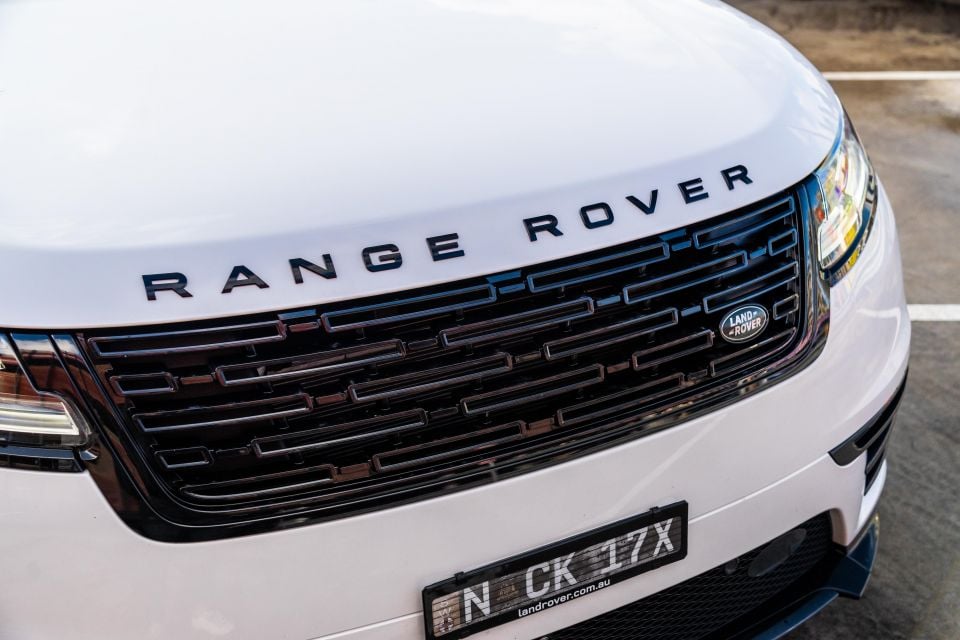
| Running costs | Range Rover Velar P400 Autobiography |
|---|---|
| Warranty | 5 years, unlimited kilometres |
| Roadside assistance | 5 years |
| Service intervals | 12 months or 20,400 kilometres |
| Capped price servicing | 5 years |
| Total capped price service cost | $2450 |
To see how the Range Rover Velar shapes up against the competition, check out our comparison tool
The latest Velar is still a stunning SUV searching for a purpose.
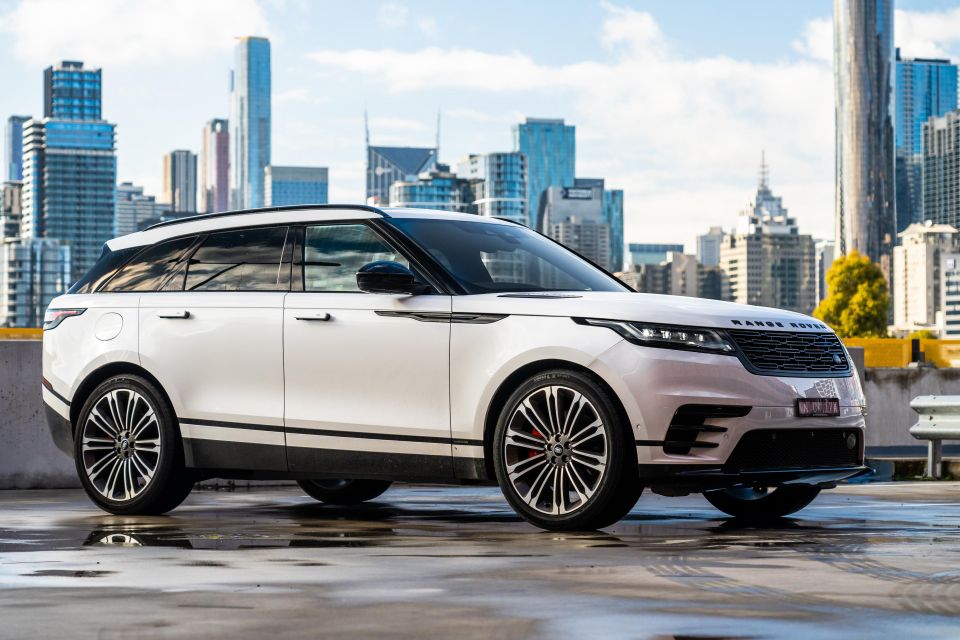
As a purely emotional purchase, it presses all the right buttons. From the expensive materials to the pretty, minimalist design, the cabin is just a nice place to spend time, and it drives like a slightly shrunken Range Rover, just as you’d expect.
JLR is much better at keeping its cabin technology fresh than most carmakers, so the Velar doesn’t feel old when you start using the screen despite its advancing age.
But… there’s no getting around the fact our tester was priced at $166,000 before on-road costs. That’s right in the heart of the Range Rover Sport lineup, and there’s no getting around the fact the Sport is a bigger, more modern, and more premium take on the same formula as the Velar.
Audi, BMW, and Mercedes-Benz will also sell you well-equipped versions of their much bigger family SUVs for the same money.
It’s not a particularly rational purchase, the Velar. But if you can afford to shop with your heart instead of your head, it’s a very nice purchase.
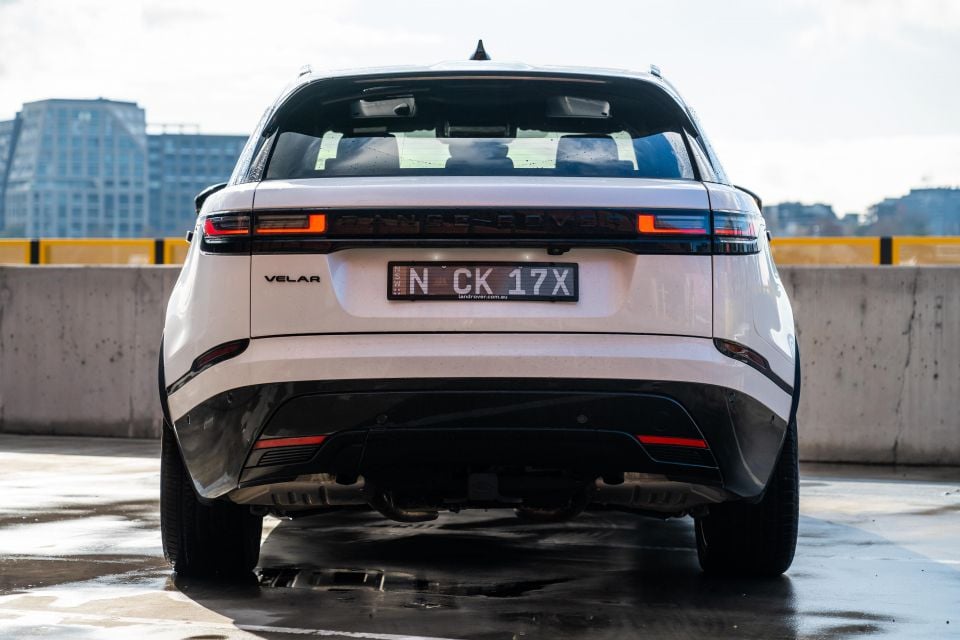
Interested in buying a Range Rover Velar? Get in touch with one of CarExpert’s trusted dealers here
Click the images for the full gallery
Where expert car reviews meet expert car buying – CarExpert gives you trusted advice, personalised service and real savings on your next new car.
Scott Collie is an automotive journalist based in Melbourne, Australia. Scott studied journalism at RMIT University and, after a lifelong obsession with everything automotive, started covering the car industry shortly afterwards. He has a passion for travel, and is an avid Melbourne Demons supporter.


Andrew Maclean
5 Days Ago
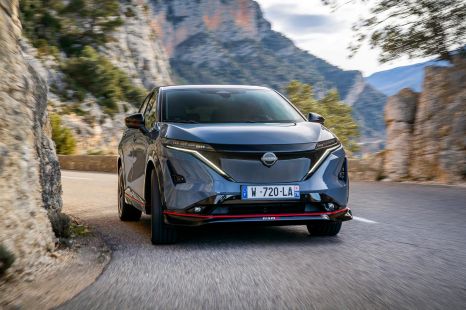

Shane O'Donoghue
5 Days Ago
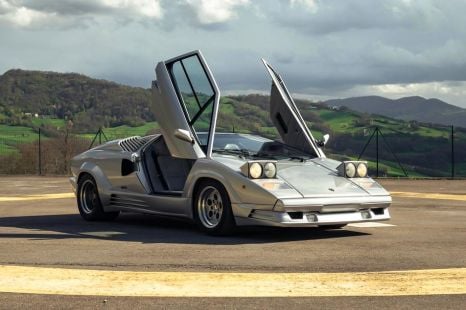

Anthony Crawford
4 Days Ago
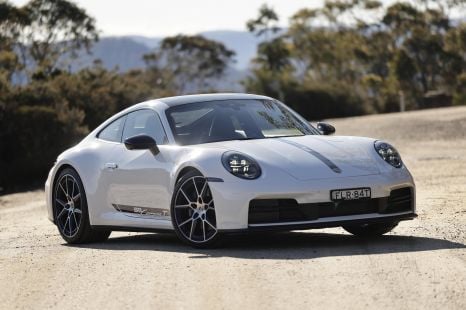

Matt Campbell
3 Days Ago
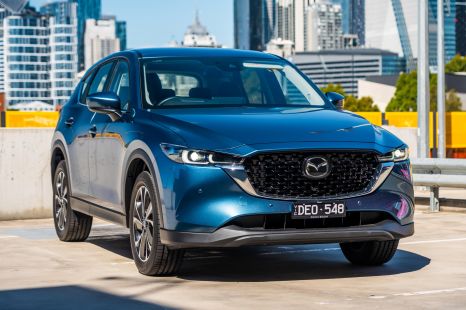

James Wong
2 Days Ago


James Wong
3 Hours Ago